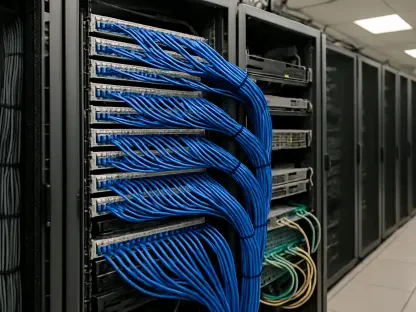Imagine a rural classroom where students struggle to join online lessons due to spotty internet, or a remote healthcare clinic unable to access telemedicine services for critical patient care, highlighting the stark digital divide that still plagues millions of Americans. The recent Supreme Court ruling affirming the constitutionality of the $9 billion annual Universal Service Fund (USF) fee has sparked intense discussion about the future of broadband access. This roundup gathers diverse perspectives from industry leaders, policy experts, and telecom stakeholders to explore the implications of this landmark decision, the challenges of the current funding model, and potential reforms to ensure equitable connectivity across the nation.
Diverse Views on the Supreme Court’s Decision
Impact on Underserved Communities
Industry analysts have hailed the Supreme Court’s affirmation of the Federal Communications Commission’s authority over the USF as a vital step for maintaining connectivity programs. Many emphasize that programs like E-Rate, Lifeline, and the Healthcare Connect Fund support internet access for nearly 100 million Americans, particularly in rural and low-income areas. The consensus among these voices is that the ruling prevents a potential collapse of essential services that bridge the digital gap.
Contrasting opinions, however, surface regarding the sufficiency of current efforts. Some rural advocacy groups argue that while the decision secures existing programs, it does not address the slow pace of broadband expansion in remote regions. They point out that many communities still lack reliable high-speed internet, suggesting that the ruling, while protective, may not push for the aggressive growth needed to meet modern demands.
A third perspective focuses on economic implications, with telecom consultants noting that sustained USF funding ensures small businesses in underserved areas can participate in the digital economy. This viewpoint underscores the ripple effect of connectivity on local job creation and innovation, framing the court’s decision as a safeguard for broader economic equity.
Concerns Over Federal and State Roles
The debate over jurisdiction also garners varied reactions. Several policy experts express relief that the ruling upholds federal oversight through the FCC, arguing that a shift to state or local control could lead to inconsistent broadband access across regions. They highlight the risk of fragmented policies if funding responsibilities were decentralized, potentially widening disparities.
On the other hand, a segment of state-level officials contends that local governments are better positioned to understand and address specific connectivity needs. Critics of federal dominance suggest that the ruling might stifle innovative state-led initiatives, limiting tailored solutions for unique geographic and demographic challenges.
An additional angle comes from legal scholars who view the decision as a precedent for federal authority in telecommunications policy. They argue that this clarity strengthens the FCC’s ability to enforce uniform standards, though some caution that over-centralization could ignore local input, urging a balanced approach in future policy-making.
Challenges in the Current USF Funding Model
Outdated Mechanisms in a Digital Era
A common critique among industry observers centers on the outdated structure of USF funding, which relies on telecom providers passing fees to consumers. Many point out that this model, unchanged for decades, fails to reflect today’s internet landscape dominated by high-bandwidth applications like streaming. The strain on this system is evident, especially as consumer bills rise to cover the costs.
Another concern raised by telecom analysts is the disproportionate burden on rural networks, where infrastructure expenses often exceed revenue. Data from various research groups indicate that maintaining connectivity in these areas is increasingly unsustainable under the current framework, prompting calls for urgent revision to prevent service disruptions.
Some stakeholders also warn of consumer backlash as fees continue to climb without visible improvements in access or speed for many users. This perspective emphasizes the need for transparency in how funds are allocated, suggesting that public trust is at risk if the system does not adapt to contemporary expectations and needs.
Sustainability Risks and Consumer Impact
Financial experts in the telecom sector highlight the long-term viability concerns of the USF’s funding approach. They argue that without diversification of revenue sources, the fund may struggle to keep pace with growing demand for broadband, particularly as data usage skyrockets in both urban and rural settings.
A differing opinion emerges from consumer advocacy groups, who stress that the pass-through of fees to end-users creates an unfair burden, especially on low-income households. They advocate for reforms that would shield vulnerable populations from rising costs, pushing for alternative funding mechanisms to sustain universal access programs.
Meanwhile, some industry insiders suggest that the current model disincentivizes innovation among telecom providers, as the focus remains on cost recovery rather than service enhancement. This viewpoint calls for a reevaluation of incentives within the funding structure to encourage investment in next-generation technologies.
Proposals for Modernizing Broadband Funding
Incorporating Big Tech Contributions
One widely discussed reform involves requiring contributions from edge providers like major tech companies that heavily utilize USF-subsidized networks. Many policy analysts support this shift, citing data showing that a significant portion of network costs—up to 80% in some studies—is driven by traffic from top internet brands. They argue this would create a more equitable funding base.
Opposition to this idea comes from tech industry representatives who caution against new financial obligations. They contend that such mandates could stifle innovation or lead to higher costs for digital services, ultimately impacting consumers. This resistance highlights a tension between telecom and tech sectors over shared responsibility.
A middle-ground perspective suggests phased integration of tech contributions alongside legislative safeguards to prevent cost pass-through to users. Proponents of this balanced approach reference bills like the Lowering Broadband Costs for Consumers Act as potential frameworks, drawing parallels to similar “Fair Share” policies in Europe for inspiration.
Addressing Regional Disparities
Rural broadband advocates emphasize the need for targeted funding reforms to address high infrastructure costs in less populated areas. They propose allocating a larger share of USF resources to these regions, arguing that universal connectivity cannot be achieved without prioritizing the hardest-to-reach communities.
Conversely, urban-focused policy experts warn against over-allocating funds to rural projects at the expense of upgrading aging networks in densely populated areas. They advocate for a proportional distribution that considers population density and existing infrastructure, ensuring no region is left behind in the digital race.
An alternative suggestion from industry trade groups focuses on public-private partnerships to supplement USF funds. This approach aims to leverage private investment for regional projects, reducing the strain on public resources while fostering collaboration between government and corporate entities to tackle disparities.
Key Takeaways from Stakeholder Insights
Reflecting on the varied opinions surrounding the Supreme Court’s ruling, several core insights emerged over the past discussions. The decision was widely seen as a crucial win for preserving connectivity programs, yet it also exposed deep flaws in the USF’s funding model that had long been a point of contention. Experts across the board agreed on the urgency of modernization, though their approaches—from involving Big Tech to prioritizing regional needs—diverged significantly. Looking ahead, actionable steps include advocating for bipartisan legislative reforms, fostering dialogue between telecom and tech industries, and exploring innovative funding partnerships. Staying informed about pending bills and supporting initiatives that address the digital divide remain essential for ensuring that broadband equity becomes a reality for every American.









